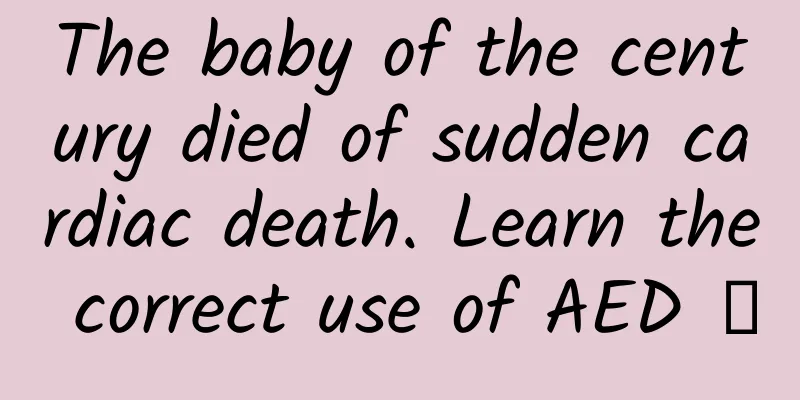There are eighty-one difficulties on the road to environmental protection, and seventy-two transformations of recycled plastics!

|
As hot as the August sun was the competition on the field and the heated discussions outside the field at the Paris Olympics. In addition to the peak of sports competition, the field also pushed "recycled plastics" to the center of the world stage. You said you didn't notice it? Then you must have seen the podium, the seats in the stadium, the volunteers' uniforms, and the award-winning uniforms of our Chinese Olympic athletes, right? That’s right! It’s all about recycled plastics! The podium for this year's Olympics is made of wood and 40 tons of plastic recycled in France | Olympic official website The seats at the Olympic Aquatics Center are made from plastic bottle caps | Olympic official website The volunteers' T-shirts are made from 100% recycled plastic and second-hand textiles, and the trousers are made from 84% recycled polyester. Chinese Olympic athletes' award-winning uniforms are made of recycled nylon, recycled polyester and other environmentally friendly fabrics丨Xinhuanet 2024 Paris Olympic Games Chinese sports delegation award uniforms丨Xinhuanet In addition to the Olympic Games, have you also seen recycled plastic products around you? And how are they taking this path of "rebirth" step by step? Understanding the “ID Number” of Plastics Understand their life cycle The rebirth of plastic begins with recycling. In the field of plastic recycling and regeneration, different plastic materials have different regeneration capabilities. Some plastics can be recycled and regenerated more easily due to their chemical structure and physical properties, while others may be difficult to recycle because they are difficult to separate or the cost of regeneration is high. So, what are the types of plastics? How do we identify them? It’s very simple! Read their “ ID numbers ”! If you have plastic bottles or other plastic products on hand, you can find their "ID numbers" for comparison. The "ID number" on the bottom of the plastic bottle Plastic products usually have a circular triangle consisting of three arrows, with a number in the middle, which is a code indicating the type of plastic. The numbers and English abbreviations usually refer to the resin used in this plastic product. There are 7 common types of plastics. Plastic "ID Number" What we often call "picking up bottles" is actually the most easily recyclable PET (polyethylene terephthalate). After recycling, it can be regenerated into textiles, carpets, etc. The fleece in your autumn and winter wardrobe may be the "reincarnation" of bottles. ♴ HDPE (high-density polyethylene) is usually used to make opaque or colored packaging, such as packaging bottles for shampoo, shower gel and other cleaning products, and is also easy to recycle. A European test experiment found that if precise and highly controlled conditions are met, this type of plastic can be recycled 10 times. After recycling, it can be used again as a daily chemical packaging bottle, or it can be made into a common sanitation trash can, etc. ♵ PVC (polyvinyl chloride) is commonly used to make products such as raincoats and water pipes. Because it contains additives and mixed materials, it is relatively difficult to recycle, but it can still be recycled in some cases. However, most of the regenerated PVC products will lose their firmness and it is difficult to withstand multiple recycling. ♶ LDPE (low-density polyethylene) is the raw material for cling film and shopping bags. Since it is mostly used to make such thin, disposable items, it is difficult to recycle. However, with the development of green and low-carbon concepts and recycling technology, some cities have included it in the scope of "low-value recyclables" and can be put into recyclable trash cans. ♷ PP (polypropylene) is commonly found in take-out boxes, milk tea cups, storage boxes, etc. It is durable and can be heated in a microwave or frozen in a refrigerator. It can be reused after daily cleaning and can also be recycled. PP is also used in clothing products. The recycled polypropylene used in the Olympic award-winning suits mentioned at the beginning is recycled from this type of plastic. In addition, many automotive parts are also made of this type of plastic, such as car interiors and bumpers, bicycle fenders, etc. ♸ PS (polystyrene) is often used in the production of yogurt cups, instant noodle boxes, disposable lunch boxes, foam boxes, etc. It is difficult and costly to recycle, and its recycling rate is much lower than other plastics. Plastics that do not belong to the above categories are classified as ♹ Other , such as the common water barrels (PC) in the home, toys, home appliance shells (ABS), etc. Different materials have their own characteristics, which require specific analysis during recycling. Plastic products that are common around us, such as beverage bottles, take-out boxes, and food packaging, are often discarded within a few dozen minutes from the time we get them. However, their entire life cycle actually goes through various links, including raw material mining, raw material processing, design, manufacturing, and transportation. At the same time, there is also the management of discarded plastics that is often overlooked by us. When we pay attention to the entire life cycle of plastics, we can more comprehensively reduce the negative impact of plastics on the environment from all aspects. More importantly, we can start to change the existing linear economic model of plastics to a circular model of "production-use-recycling-reuse". UNEP Introduction to Linear Economy and Circular Economy | United Nations Environment Programme The journey of plastics: From waste to renewable resources At present, many people's first reaction to recycled plastics may be "processed garbage", and their attitude towards recycled plastic products may be "Why should I spend money to buy something made of garbage?" Although recycled plastics come from discarded garbage, it does not mean that recycled plastics are garbage. The real transformation from waste to renewable resources is not as simple as imagined. Through advanced recycling technology and strict processing procedures, they can be transformed into high-quality materials, whose performance, safety and value can even be comparable to those of virgin materials. The Paper When we sort used plastic products and put them into recycling bins, the recycling journey of plastic has just begun. The collected plastics will be transported to the recycling center, where they will be further sorted, cleaned to remove residues, broken into small pieces, etc. This ensures the purity of the material and facilitates subsequent processing. Recycling is the core step of plastic recycling. Different technologies are used to process different plastic types and intended uses. Physical recycling is the most common method, which processes plastics into new particles by melting and reshaping. Chemical recycling breaks down plastics into their basic components through chemical processes and then re-synthesizes them. The treatment methods of waste plastics include incineration and landfill, physical recycling, chemical upgrading and conversion under high temperature and high pressure and at room temperature and pressure | Reference 1 Whether recycled plastics can return to us still needs to undergo rigorous testing . Only after their physical and chemical properties have passed the test to ensure that they can meet the cleanliness and functionality requirements of new products can they be safely used to manufacture new products. In order to achieve the use of plastic waste in automobiles, textiles, daily chemicals and even food contact grades, not only high requirements are placed on the recycling process, but also certain requirements on the recycled materials themselves . If you want to recycle it into food contact grade plastic, the waste plastic itself needs to be pure enough. In other words, plastic that was originally used to make trash cans is often difficult to recycle into high-value products. Only when the plastic product itself is of good quality can it be applied to high-value scenarios through complex recycling processes. Although the whole journey is long, it is also a process of converting waste into useful resources, which completely changes the fate of waste plastics that could only be incinerated and landfilled. At the same time, it also reduces the negative environmental impacts such as carbon emissions and land resource occupation caused by incineration and landfilling. Plastic waste landfill and combustion treatment process | Reference 1 In addition, the use of recycled plastics also reduces the demand for new raw materials and reduces dependence on non-renewable resources such as petroleum. Plastic pollution | Unsplash In addition to these discarded plastics from daily life that can be recycled, the recycling of some other plastics is also attracting attention, namely marine plastics . About 8 million tons of plastic enter the ocean every year. At present, there are also some recycling cases for marine plastics, such as Adidas sports shoes made of marine plastic waste and illegal deep-sea gillnets, and Microsoft mouse shells made of marine plastics. Of course, due to the long-term erosion of the surrounding environment and seawater, the recycling process of marine plastics is more complicated, and there are higher requirements for recycling technology and plastic sources. Upper made from 85% Parley Ocean Plastic | Brand website A certain technology brand's marine-friendly mouse, 20% of the material used to make the mouse shell comes from recycled plastic from the ocean | Brand official website Identifying compliant recycled plastic products Recycled plastics have been widely used in many fields due to their characteristics of waste reduction, carbon reduction and recycling, such as textiles, packaging, automobiles, home appliances, building materials, electronic products, agriculture, etc. So, how can we identify the recycled plastic products around us? First, you can check the product label . In addition to the "ID number" of plastic products mentioned above, many recycled plastic products will be marked on the outer packaging or the product itself that they use recycled materials, and sometimes the content of recycled materials will be indicated. For example, Coca-Cola has launched beverage bottles made of recycled plastic in many countries (excluding bottle caps and labels). The label reads " I'm made from 100% recycled food grade PET ". At the same time, compared with the ordinary "Recycle Me" introductory words, this type of bottle is marked with "Recycle Me Again". Recycled packaging of a certain brand | Brand official website Clothes made from recycled plastic will also be indicated on their labels. Recycled polyester fiber labeling of a clothing brand丨Internet Eligible recycled plastic products are often specifically labeled like this to help us identify their recycled properties. However, not all recycled plastic products are directly labeled. If you are interested in purchasing recycled plastic products, you can also try to learn more about the brand. Many brands will publicly disclose their commitment to sustainable development, including the proportion and type of recycled plastics used. You can browse the brand's official website or consult customer service . Recycled plastic packaging for cleaning products | Brand official website In addition to product declarations, recycled material certification standards can also prove that products meet environmental requirements and enhance consumers' trust in recycled plastic products. It also helps products enter the international market and meet the environmental protection requirements of overseas markets or customers. For example, the EU 2022/1616 Recycled Plastics Regulation requires that from October 10, 2024, the collection and further pre-processing of plastics must be certified by a third party. Common international plastic certification standards include the Global Recycling Standard (GRS), the Recycling Claim Standard (RCS), and the Ocean Plastic Certification (OBP). It is worth noting that my country is improving the management of the identification and logo of recycled plastic products. The draft of the national standard "Identification and Logo of Recycled Plastics" has been completed, and the solicitation of opinions ended in July. It is expected to be completed by the end of this year. After the implementation of this national standard, we will be able to identify recycled plastic products in our lives through unified logos. Responsible products, responsible consumption Although the road to the rebirth of plastics is not an easy one, the development of recycled plastics still faces many challenges, such as the large variety of waste plastics, the difficulty of recycling, the complexity of recycling technology, the high cost, and the lack of a unified quality standard and evaluation system. But along with this comes the broad development prospects of recycled plastics. With the innovation of sorting, processing and recycling technologies, the establishment of mature and unique recycling and regeneration systems in some countries or regions, and the market demand for environmentally friendly products, plastic recycling has become a consensus on the goal of circular economy. In the future, there may be more and more recycled plastic products around us. I wonder what your attitude is towards these recycled plastic products? When I saw these products, my thought was that in the face of the challenges that plastic pollution brings to nature, the environment, and human beings themselves, we are trying hard to explore and write down different answers on the way forward. The commitment and practice of brands in different industries on plastic issues are important manifestations of corporate social responsibility and green development. More and more consumers like me are willing to pay for green consumption and participate in recycling, which is also a way to reduce the negative impact on the environment through responsible consumption. Author: Li Zilin This article was republished by the German Agency for International Cooperation (GIZ) Supported by the EU-China Cooperation Project on Enabling Recycling Value Chain References [1] HU Yanqing, HU Fan, ZHOU Jianchi, et al. Research progress in upcycling of waste plastics[J]. CHINA PLASTICS, 2024, 38(04): 79-87. This article comes from GuokrNature (ID: GuokrNature) |
<<: Has your information been leaked today?
>>: New scientific discovery! A guide to the parasites of the "poison king" of bat flies
Recommend
Another wave of confusing place names: "Changchun" is not spring-like all year round, and "Mudanjiang" has no peonies
This article is about 3000 words Reading time: 8 ...
3 counter-common sense points in channel cooperation
Recently, I met with several newly appointed pres...
3-step analysis | The user growth system behind Xiaohongshu’s massive content
High-quality product content is inseparable from ...
Three channels for App operation and promotion: online, offline and new media.
App operation is not easy, which depends on produ...
A complete analysis of the Toutiao search account setup and delivery ideas
As a new search platform launched this year, Tout...
How to do fan marketing? Five methodologies for fan marketing!
% ignore_pre_1 % Luo Yonghao is the first generati...
The origin of the interstellar "hula hoop": Why do some planets have a "ring"?
In 2012, scientists discovered an extrasolar obje...
Himalaya FM product analysis!
Pan-entertainment has always been in the limeligh...
Does Wi-Fi really have any radiation hazards?
Recently, there has been a lot of debate about Wi-...
Year-end physical examination, @diabetics: don’t forget these 3 screenings
In November this year, the top medical journal Th...
Toutiao Nanny-level Marketing Promotion Strategy
Recently, when I was providing marketing consulti...
11 hair dryer reviews: Shocking! I bought fake brand products in a live broadcast room! How to distinguish?
Here’s what happened: On this year’s Double Eleve...
What changes have occurred in new media in 2016? What changes will new media see in 2017?
Finally, it is the last day of 2016. There are ex...
This common fruit in the north is loved by many people. Can it also treat diabetes? The answer is different from what you think!
Rumor: "Ginkgo nuts are very nutritious and ...
Who is the biggest foodie underground? The soil animal food web tells you
Produced by: Science Popularization China Author:...









